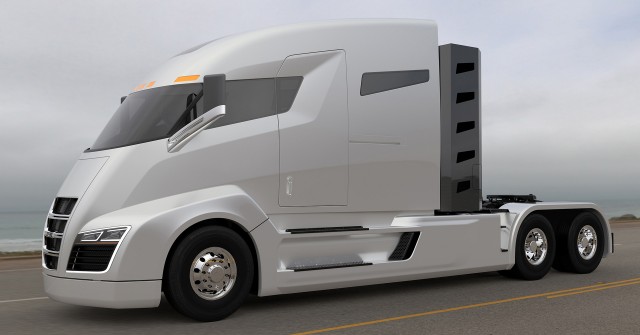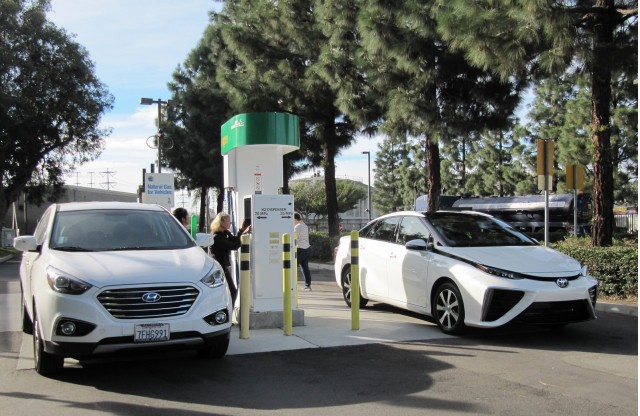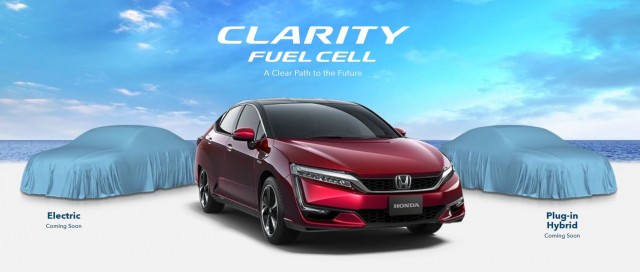In May, the Nikola Motor Company appeared, seemingly out of nowhere, with a design for a natural gas- and electric-powered Class 8 commercial semi truck.
It is to be called the Nikola One, and the company plans to unveil a running prototype on December 2.
But it appears Nikola (pronounced NEEK-oh-la) will actually employ a somewhat different powertrain in its semi truck.
It was previously understood that the Nikola One would use natural gas-powered turbines to generate electricity to power the truck.
Now, the company says U.S. and Canadian-market versions of the truck will in fact use hydrogen fuel cells.
This seemingly-important piece of information was previously kept confidential "pending finalization of key supplier agreements," a Nikola press release said.
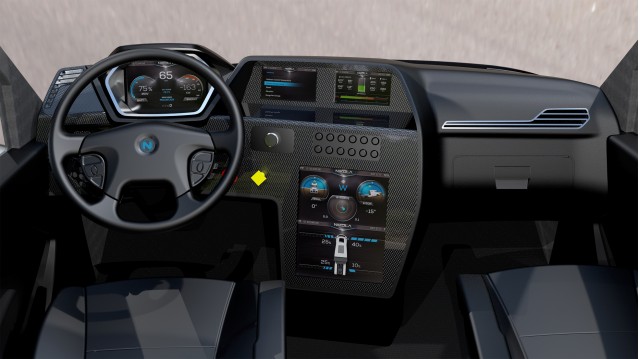
Nikola One natural gas-electric semi truck
The company still plans to produce a natural-gas version of the Nikola One, it said, but it will be sold only in countries where hydrogen fueling stations aren't available.
Nikola says it plans to ensure that sufficient infrastructure is available in the U.S.
It will build 50 hydrogen stations, with a goal of having its entire fueling network operational by 2020.
To produce hydrogen for these stations, Nikola will also build its own solar farms, which the company says will produce 100 megawatts or more of electricity apiece.
When it first announced its Class 8 truck back in May, Nikola had said it would build a network of 50 natural-gas stations.
It also offered 100,000 gallons of free natural gas to the first 5,000 customers who placed reservations for the truck.
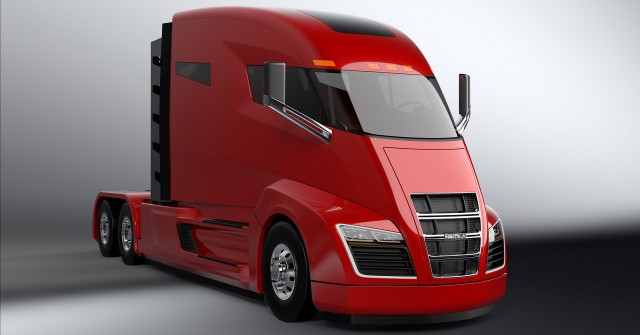
Nikola One electric semi truck
It's unclear whether U.S. customers who took up that offer will now get free hydrogen instead.
Nikola claims the same range of 1,200 miles between fill-ups for its hydrogen powertrain as it did for natural gas.
The Nikola One is to be powered by six electric motors, good for a combined 2,000 horsepower and 3,700 pound-feet of torque.
That power is sent to the wheels via a two-speed transmission.
A 320-kilowatt-hour lithium-ion battery pack can also be recharged by plugging in, but the company doesn't expect that to be the main energy source.
Given the underdeveloped state of U.S. hydrogen-fueling infrastructure, Nikola may have no choice but to build its own stations to make its truck a viable option for haulers.
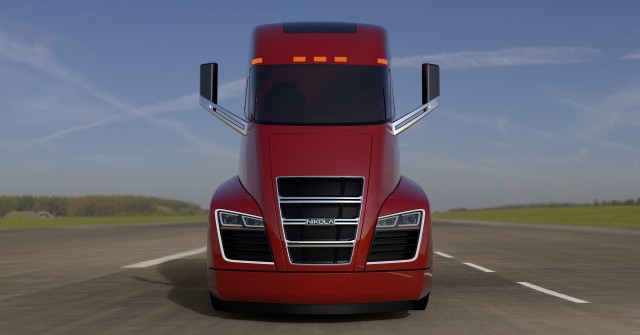
Nikola One electric semi truck
Hydrogen stations today are considerably more expensive to construct than gas and diesel fueling stations or electric-car charging sites.
But building a network along major highways to support a fleet of over-the-road trucks is somewhat less daunting than creating one dense enough to make hydrogen practical for drivers of passenger vehicles.
Given the very high number of miles covered by most diesel-powered commercial tractor-trailer rigs, the reductions in tailpipe and carbon emissions would be substantial even at a low number of such trucks.
Still, Nikola faces the same uphill battle as any other startup attempting to break into the vehicle market.
It faces a particularly tough challenge in trying to introduce a form of electric drive to commercial trucks at a faster pace than is generally considered to be possible.
We'll get a better idea of the company's chances when the Nikola One prototype is unveiled in December.
